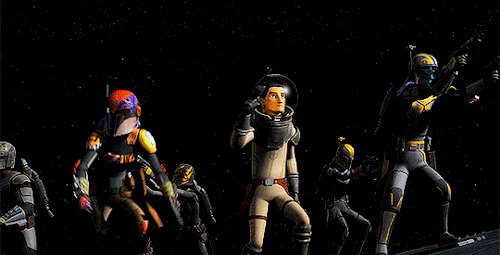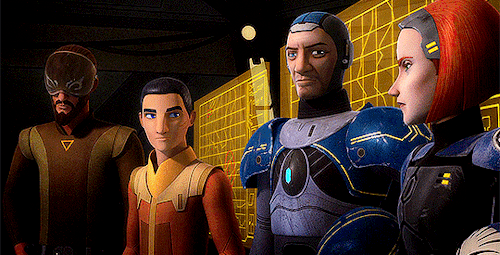Exciting Day!
Exciting Day!

Update your phones with our #CountdownToMars wallpapers, like this one, today: https://www.nasa.gov/feature/perseverance-mars-rover-wallpaper-images/
It's LANDING DAY for our Perseverance Mars Rover and her mission to search for ancient signs of life on the Red Planet!
Watch LIVE coverage today starting at 2:15pm ET (18:15 UTC):
Make sure to follow us on Tumblr for your regular dose of space: http://nasa.tumblr.com
More Posts from Athenadonovan and Others










Warriors of great skill and cunning
They can carry on and entire conversation just using tone and their names. :)








that’s it that’s their relationship
Hilarious!

he has my eternal respect for using his playing spock privileges in a funny way
My exact thoughts when I heard that line.








A Mandalorian and a Jedi? They’ll never see it coming.
I never met her, but did meet many who worked with her.  She was a pioneer.

RIP, D. C. Fontana.
I want Luke Skywalker to live forever...
Reblog if you agree
I wish more people understood this.
What Does Executive Dysfunction Look Like?
Here, while focused and not overstimulated, I asked The Kid to draw an apple and spell it:

He is able to write the word apple all by himself, from memory. He knows how to spell apple, and he knows that he knows. He needs a simple visual aid to draw an apple himself, his apple resembles an apple (as drawn by a 6 yo, anyway).
Here, while slightly overstimulated, I ask The Kid to draw a cat and write the word cat:

Though he definitely knows how to spell cat, he needs a visual aid here to do so. He also needs a simple visual aid to draw a cat, but even with an aid, he draws the parts in the wrong order. You can tell he's struggling to perform the task.
Here, absolutely overstimulated, I ask The Kid to draw a whale and write the word whale:

After 3 minutes of picking up the pencil and then putting it down again, with lots of echolalia, he makes an attempt. He needs a visual aid for both tasks. While he writes each letter in the correct order, their sequence is mostly random. He cannot draw at all in this state.
This is Executive Dysfunction. A symptom common in autism, and adhd.
A person with Executive Dysfunction is not making a decision not to do something (chores, homework, cooking, etc.) -- they genuinely cannot do the thing. At least not under certain circumstances, such as overstimulation or stress. They might require help and step by step guidance to get through it, or to abandon the task entirely until circumstances are more ideal.
This is a normal experience and not something to be punished for (by yourself or others). In fact punishment or the fear of punishment actually makes ED worse and more frequent. The only things that actually help the severity and frequency of Executive Dysfunction is patience and understanding.
This is also why functioning labels are outdated and inaccurate. You can go from 1 to 3 in the same day. Heck, the same hour if you're having A Time of It. For example, I go straight from 1 to 3, skipping 2 entirely when I look at road maps.
(Obligatory disclaimer: The Kid was not compelled to perform these tasks against his desire. I compiled these images over the course of summer break, when he requested the activity but wasn't always in a state to complete the activity. Then realized what a keen visual representation of ED this was, and that it could be helpful.)
Yes! Love the thought out behind space travel here.
Thought on science fictional hyperspaces:
So, like a lot of science fiction writers, in a couple of my science fiction settings I explain “fast” interstellar communication and travel by saying it involves sending messages and spacecraft through “hyperspace.” Hyperspace is a sort of “basement” of our universe that messages and ships can pass through; it is more compact than our space, and there is a correspondence between locations in hyperspace and locations in our space. So, a ship can enter hyperspace, travel a few hundred or thousand AU or a light year or something, go back to our space, and be in the Alpha Centauri system. This is possible because hyperspace offers a possible path where e.g. the distance between our solar system and Alpha Centauri is less than 4 light years; hyperspace is a cosmic short-cut. You can send radio messages through the same short-cut, if you stick the right parts of the transmitter and receiver into hyperspace.
So far, so I good, but like a lot of science fiction writers I also prefer to limit hyperspace travel so it’s more-or-less useless for relatively short journeys, e.g. between planets of our solar system within the orbit of Uranus. This is mostly because I like that hard SF stuff where space travel within a solar system is treated relatively realistically and a solar system still feels big. I’m OK with hyperspace for letting my characters get to Tau Ceti in less than twelve years, but when it comes to asteroid mining, space battles, etc., I want that stuff to work more-or-less like it would in real life. Larry Niven had a nice approach for this: just say you can’t enter or exit hyperspace close to a large mass, so e.g. you can’t enter or exit hyperspace within 20 AU of our sun. To travel to Alpha Centauri through hyperspace you have to travel out beyond Sol’s hyper-limit, then go into hyperspace and take the hyperspace short-cut, then exit hyperspace outside Alpha Centauri’s hyper-limit, then travel the rest of the way in our space. A hyper-limit limitation on hyperspace travel works well for me. I’m less satisfied with it as a limitation on hyperspace communication though, and a few days ago I had an idea for that which I like.
It came to me as I was thinking about how hyperspace travel is kind of analogous to being able to travel through the interior of a sphere instead of being limited to travelling on its outer surface. If you have a sphere the size of Earth and you want to get to a point on the exact opposite side of it, if you have to travel along the outer circumference that’s a journey of 40,000 kilometers, but if you could travel in a straight line through the center of the sphere that’s only 12,750 kilometers. Travelling from Sol to Alpha Centauri in our space is analogous to being limited to travelling along the outer circumference of a sphere, making the same journey through hyperspace is analogous to taking a short-cut through the interior of the sphere.
And it occurred to me to mentally pull on one feature of this analogy: a short-cut through the interior of a sphere would be much more useful for long journeys than for short ones. Again, let’s say the sphere is the size of Earth. If you only want to travel one meter, the difference between a path along the outer circumference of the sphere and a short-cut through its interior is very small. A 1 meter path along flat ground is pretty close to being a straight line. On the other hand, if you want to get to the other side of the sphere, the path along the sphere’s outer circumference is more than three times as long as the path through the center of the sphere.
And I had the idea: what if hyperspace works in a way that’s analogous to that? Maybe the distance between, say, Earth and Jupiter is analogous to a 1 meter distance on the surface of the Earth; so small that the shortest possible path through hyperspace is almost as long as the shortest possible path through our space. Then the distance to Alpha Centauri might be more analogous to a journey across a large fraction of Earth’s circumference; it’s big enough that the shortest possible path through our space is orders of magnitude longer than the shortest possible path through hyperspace. The geometry involved is probably a lot less straightforward than spherical geometry to humans, so for short distances the relationship between our space distances and hyperspace distances might even invert; you might have a set-up where 100 light years in our space is 5 light years in hyperspace, 4 light years in our space is 1 light year in hyperspace, and 1 AU in our space is 4 AU in hyperspace.
This might get you a set-up where you can have relatively fast interstellar communication and travel, but within the orbit of Neptune (or equivalent distance) you’re stuck dealing with light lag.
It would also have the interesting effect that hyperspace travel gets faster for longer journeys. A 1 year voyage might take you to Alpha Centauri, a 5 year voyage might take you 100 light years, a 20 year voyage might take you to the other side of the galaxy, a 100 year voyage might take you to a distant galaxy billions of light years away.
Beautiful rebelcaptain moments.


REBELCAPTAINWEEK DAY 1: SIGNIFICANT MOMENTS (insp)
-
 virginalears reblogged this · 1 month ago
virginalears reblogged this · 1 month ago -
 annahpmn8 liked this · 6 months ago
annahpmn8 liked this · 6 months ago -
 thefeline-interloper liked this · 2 years ago
thefeline-interloper liked this · 2 years ago -
 ossumhxns liked this · 2 years ago
ossumhxns liked this · 2 years ago -
 notyams liked this · 2 years ago
notyams liked this · 2 years ago -
 braxis393 liked this · 2 years ago
braxis393 liked this · 2 years ago -
 petreoel liked this · 2 years ago
petreoel liked this · 2 years ago -
 iwillhaveamoonbase liked this · 2 years ago
iwillhaveamoonbase liked this · 2 years ago -
 coldlxvrx liked this · 3 years ago
coldlxvrx liked this · 3 years ago -
 kirantay liked this · 3 years ago
kirantay liked this · 3 years ago -
 hayalperestamarealist liked this · 3 years ago
hayalperestamarealist liked this · 3 years ago -
 w1nkueclipsesblog liked this · 3 years ago
w1nkueclipsesblog liked this · 3 years ago -
 jinglejangle101 liked this · 3 years ago
jinglejangle101 liked this · 3 years ago -
 juriprifti reblogged this · 3 years ago
juriprifti reblogged this · 3 years ago -
 amazinggad liked this · 3 years ago
amazinggad liked this · 3 years ago -
 brokebutbougielifting reblogged this · 3 years ago
brokebutbougielifting reblogged this · 3 years ago









